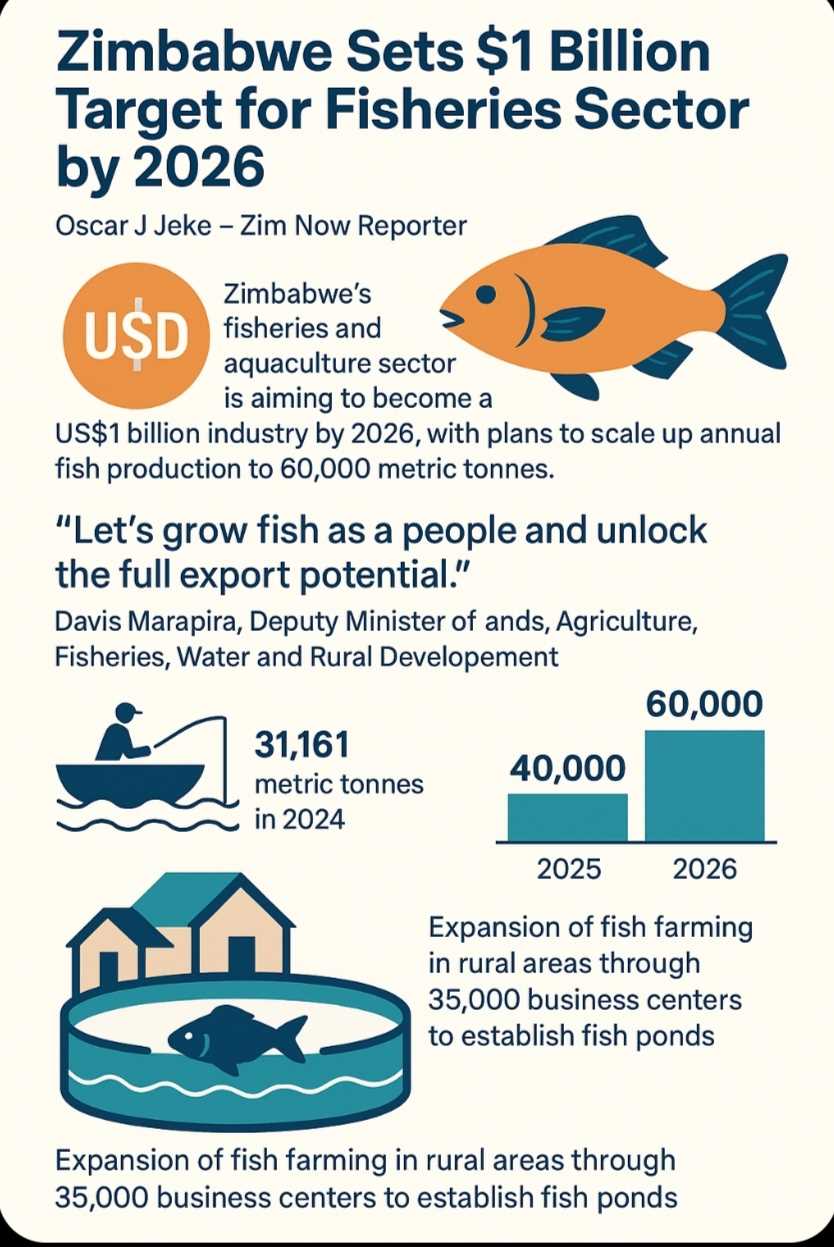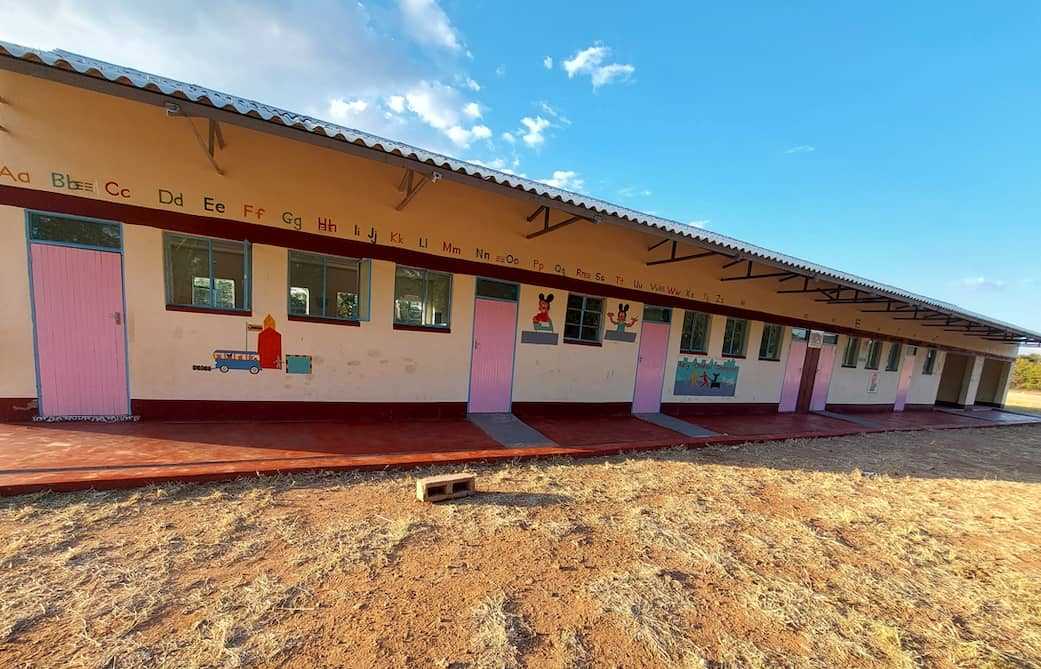
Oscar J Jeke – Zim Now Reporter
Zimbabwe’s fisheries and aquaculture sector is on a bold growth trajectory, aiming to become a US$1 billion industry by 2026, with plans to scale up annual fish production to 60,000 metric tonnes, according to government officials.
The ambitious target was reaffirmed this week by the Deputy Minister of Lands, Agriculture, Fisheries, Water and Rural Development, Davis Marapira, who emphasised the importance of coordinated stakeholder support.
“Let’s grow fish as a people and unlock the full export potential,” said Marapira. “We are creating a viable fisheries economy that benefits communities, boosts nutrition, and drives exports.”
According to official figures, Zimbabwe produced 31,161 metric tonnes of fish in 2024, with projections for 2025 set at 40,000 metric tonnes. Achieving the 2026 goal of 60,000 MT would nearly double current output.
The sector’s growth strategy is underpinned by the recently validated Fisheries and Aquaculture Bill, which seeks to consolidate legal frameworks and promote investment. Government efforts also include expanding fish farming in rural areas through 35,000 business centers, each set to establish at least two fish ponds.
Related Stories
"These rural centers will be the backbone of national fish production," said Milton Makumbe, Director of Livestock and Veterinary Services. "With 4,000 fingerlings per site, we're leveraging community participation on a national scale."
Development partners, including the Food and Agriculture Organization and the European Union, are backing initiatives to boost local feed production and strengthen hatchery networks.
Projects such as FISH4ACP have introduced innovative feed solutions—such as using Black Soldier Fly larvae—and are supporting women-led fingerling hubs in areas like Honde Valley.
Despite progress, sector leaders acknowledge several challenges, including fragmented policy, inconsistent seed quality, and climate-related disruptions. Per capita fish consumption in Zimbabwe remains at 3.2 kg—below the regional average of 6 kg—indicating room for both domestic growth and export potential.
Stakeholders have called on media houses and development partners to support the sector through robust information dissemination and public engagement.
“This is not just a government initiative,” said Marapira. “It’s a national movement that requires buy-in from communities, the private sector, and the media.”


















Leave Comments